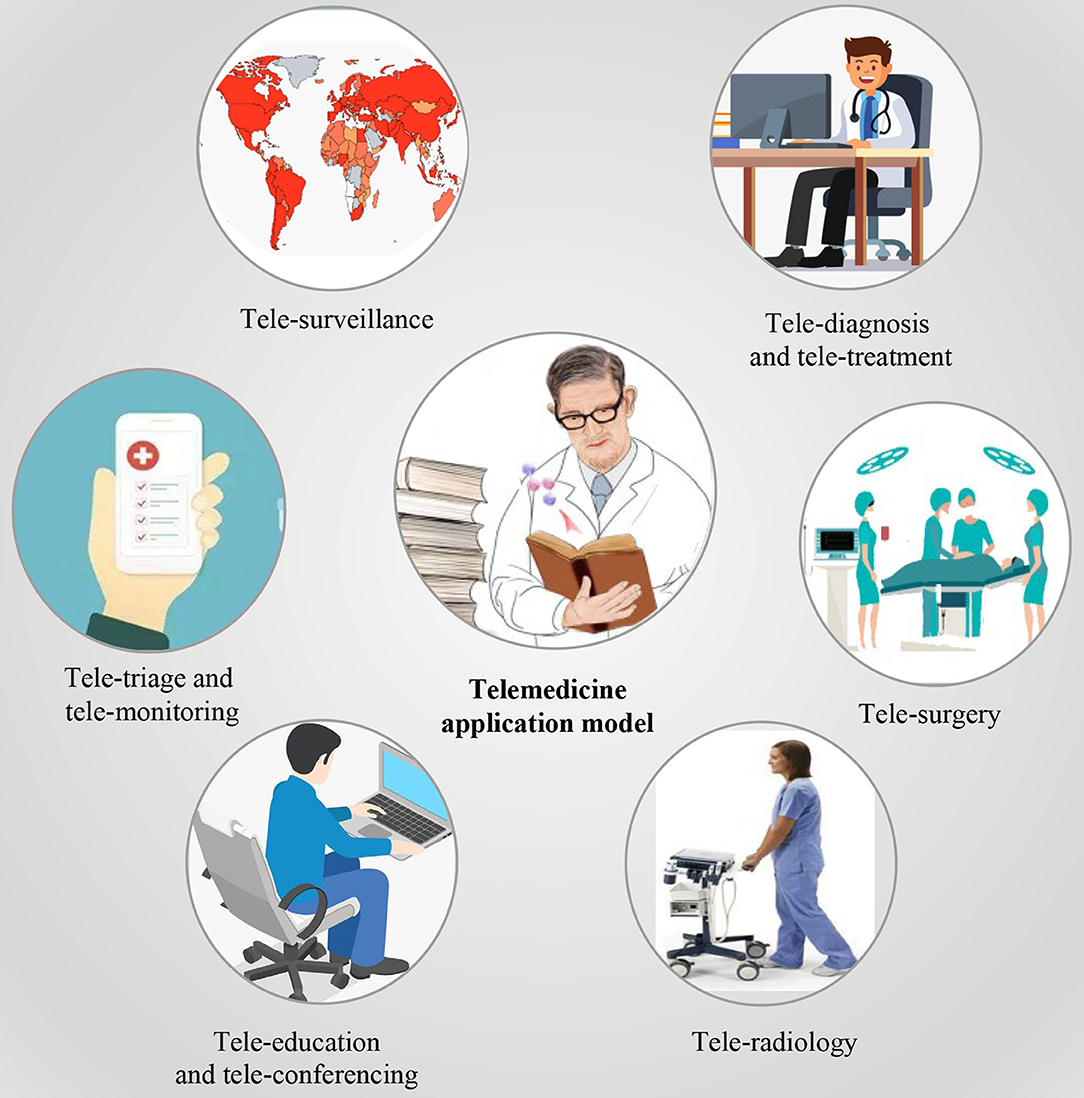Telemedicine involves delivering healthcare services remotely via telecommunications technology. It enhances access to medical care and improves patient outcomes.
Telemedicine leverages digital communication tools to bridge gaps in healthcare access. Patients connect with healthcare providers through video calls, messaging, and mobile apps. This technology facilitates consultations, diagnosis, and treatment without requiring physical visits. Telemedicine is particularly beneficial for individuals in remote areas or those with mobility issues.
It also helps reduce the strain on healthcare facilities by managing non-urgent cases remotely. The rise of telemedicine is transforming healthcare delivery, making it more efficient and accessible. As technology continues to advance, the scope and effectiveness of telemedicine are expected to grow, offering even more robust solutions to healthcare challenges.

Credit: www.medicaldevice-network.com
Introduction To Telemedicine
Telemedicine is changing how we receive medical care. It uses technology to provide healthcare services remotely. This means you can talk to a doctor without leaving home. Let’s explore the history and current trends of telemedicine.
Historical Context
Telemedicine is not a new idea. It started in the 1960s. Back then, NASA used it to monitor astronauts’ health. Over time, technology improved. This made telemedicine more accessible. In the 1990s, hospitals began using it to reach remote patients. It helped people in rural areas get medical care. Today, many people use telemedicine for regular check-ups.
Current Trends
Telemedicine is growing fast. Many people now prefer online doctor visits. Smartphones and tablets make it easy to connect with doctors. Video calls are a common way to have consultations. Apps help manage health records and appointments. COVID-19 boosted telemedicine’s popularity. During the pandemic, many turned to telemedicine for safe healthcare.
Here are some key trends in telemedicine:
- Virtual Consultations: Patients talk to doctors via video calls.
- Remote Monitoring: Devices track health data and send it to doctors.
- Mobile Health Apps: Apps help manage health and schedule appointments.
- Teletherapy: Mental health services offered through video calls.
Telemedicine is here to stay. It offers many benefits. It’s convenient, saves time, and reduces travel. This makes healthcare accessible to more people.

Credit: www.frontiersin.org
Benefits Of Telemedicine
Telemedicine is changing healthcare. It uses technology to provide medical services. Patients and doctors connect online. This offers many benefits.
Increased Accessibility
Telemedicine allows patients to see doctors from anywhere. No need to travel far. This is great for people in remote areas. They can get help quickly. Even people in cities can benefit. It saves time and effort.
People with disabilities find it easier. They don’t have to leave their homes. This makes healthcare more accessible for everyone.
- Access to specialists
- Immediate consultations
- Convenient for elderly
Cost-effectiveness
Telemedicine saves money. Patients save on travel costs. They also save time away from work. This can be a big help for families.
Doctors can also save. They don’t need big offices. This reduces their costs. They can see more patients in a day.
| Cost Savings | Details |
|---|---|
| Travel | No need to drive or take public transport |
| Time | Less time off work or school |
| Office Space | Doctors need smaller offices |
Insurance companies like telemedicine too. It can reduce overall healthcare costs. This makes insurance more affordable.
Technological Innovations
Telemedicine has transformed healthcare. Technological innovations play a crucial role. They make healthcare more accessible and efficient. Two key innovations are wearable devices and mobile health apps.
Wearable Devices
Wearable devices monitor health in real-time. They track vital signs like heart rate and blood pressure. Many devices can also monitor sleep patterns and physical activity. These features help doctors provide better care. Patients can share data directly with their healthcare providers.
| Device Type | Function |
|---|---|
| Smartwatches | Track heart rate, steps, and sleep |
| Fitness Bands | Monitor physical activity and calories burned |
| Health Patches | Measure vital signs continuously |
Wearables offer many benefits:
- Real-time health monitoring
- Early detection of health issues
- Data sharing with doctors
Mobile Health Apps
Mobile health apps are essential in telemedicine. They help users manage their health. Many apps offer features like medication reminders and appointment scheduling. Some apps also provide virtual consultations with doctors.
Popular mobile health app features:
- Medication reminders
- Health tracking
- Virtual consultations
These apps can improve patient engagement. Users can easily access health information. They also help in managing chronic conditions. Mobile health apps make healthcare more accessible.
Both wearable devices and mobile health apps are changing healthcare. They make it easier for patients to manage their health. These innovations are essential in modern telemedicine.
Credit: www.iso.org
Telemedicine In Rural Areas
Telemedicine is changing healthcare in rural areas. It makes medical help easier to get. Many people in rural places lack access to doctors. Telemedicine helps bridge this gap and offers new solutions.
Bridging The Gap
Telemedicine brings doctors to rural homes. People can talk to doctors using video calls. This saves travel time and costs. Rural clinics use telemedicine for specialist consultations. This means patients get better care quickly.
Many rural areas have few doctors. Telemedicine helps by connecting patients to urban doctors. Patients get timely advice without leaving their homes. This reduces hospital visits and improves health.
Success Stories
Many rural areas have seen success with telemedicine. One example is in Texas. A small town used telemedicine for mental health. Patients could talk to therapists via video. This made mental health care more accessible.
Another success story comes from India. Rural villages used telemedicine for eye care. Doctors in cities checked patients’ eyes using cameras. Many people got glasses and treatment without traveling.
| Location | Telemedicine Service | Outcome |
|---|---|---|
| Texas | Mental Health | Improved access to therapy |
| India | Eye Care | More people received glasses |
Telemedicine can make a big difference. It provides healthcare to those who need it most. Rural areas benefit greatly from these services.
Challenges And Limitations
Telemedicine has revolutionized healthcare, providing access to medical care remotely. Yet, it faces several challenges and limitations. Understanding these can help improve and expand telemedicine services.
Regulatory Hurdles
One key challenge is regulatory hurdles. Different countries have different rules for telemedicine. This can limit its growth. For example, doctors may need special licenses to practice in other states or countries. This complicates cross-border consultations. Additionally, there are rules about patient data privacy. These vary widely, making it hard to standardize services.
Licensing and credentialing are also complex. Doctors need to prove their qualifications in multiple regions. This takes time and money, hindering quick service expansion. Ensuring compliance with all regulations can be a daunting task.
Technological Barriers
Another challenge is technological barriers. Not all patients have access to high-speed internet. This affects the quality of video consultations. Older adults or those in remote areas may struggle with technology. This can make telemedicine less effective for them.
Here are some common technological issues:
- Low internet speeds
- Lack of devices
- Technical difficulties
- Software compatibility issues
These barriers can disrupt the flow of medical consultations. Ensuring reliable technology is crucial for effective telemedicine services.
| Barrier | Impact |
|---|---|
| Low internet speeds | Poor video quality, disrupted consultations |
| Lack of devices | Inaccessibility for some patients |
| Technical difficulties | Frustration, missed appointments |
| Software compatibility issues | Inconsistent service, security risks |
Patient And Provider Perspectives
Telemedicine has transformed healthcare by connecting patients and providers remotely. This section explores the viewpoints of both patients and healthcare providers.
Patient Satisfaction
Patients enjoy the convenience telemedicine offers. They can consult doctors without traveling.
- Time-saving: No need to spend hours in traffic.
- Accessibility: Patients in remote areas get medical advice easily.
- Comfort: Consultations happen from the comfort of home.
Many patients report higher satisfaction due to shorter wait times and flexible scheduling.
Provider Adoption
Healthcare providers are increasingly adopting telemedicine. It helps them reach more patients efficiently.
| Advantages | Details |
|---|---|
| Increased Reach | Providers can serve patients in distant locations. |
| Flexible Hours | Telemedicine allows more flexible working hours. |
| Cost-effective | Reduces overhead costs for maintaining physical offices. |
Providers also benefit from improved patient engagement and streamlined processes.
Future Of Telemedicine
Telemedicine is changing how we receive healthcare. It’s growing fast and improving daily. The future looks bright with exciting developments on the horizon.
Emerging Technologies
Artificial Intelligence (AI) is a game-changer in telemedicine. AI can diagnose diseases quickly and accurately. It helps doctors make better decisions.
Wearable Devices are becoming more advanced. They monitor your health in real-time. These devices send data directly to your doctor. This keeps you healthy and safe.
5G Technology is speeding up telemedicine. It allows for faster video consultations. This makes remote healthcare more effective and reliable.
Policy Changes
Governments are updating healthcare regulations. These changes support telemedicine growth. New policies make it easier to access remote care.
Insurance companies are now covering telemedicine services. This makes it affordable for more people. It’s a big win for patients and providers.
Licensing laws are becoming more flexible. Doctors can now treat patients across state lines. This increases access to specialized care.
| Technology | Benefit |
|---|---|
| Artificial Intelligence | Quick and accurate diagnoses |
| Wearable Devices | Real-time health monitoring |
| 5G Technology | Faster video consultations |
Case Studies
Telemedicine has transformed healthcare. Real-life case studies highlight its benefits. These stories show how telemedicine improves patient care. Let’s explore two key areas: Telepsychiatry and Chronic Disease Management.
Telepsychiatry
Telepsychiatry offers mental health services remotely. This approach has helped many patients. For instance, in rural areas, patients can access specialists online.
One case study involved a young woman with severe anxiety. She lived in a remote area. Traditional therapy was hard to access. Through telepsychiatry, she received weekly sessions. Her anxiety levels decreased significantly.
Benefits of Telepsychiatry:
- Access to specialists
- Reduced travel time
- Privacy and comfort
Chronic Disease Management
Chronic disease management is essential for many patients. Telemedicine helps in continuous monitoring and care.
A case study featured an elderly man with diabetes. He struggled with regular hospital visits. Telemedicine provided a solution. He used a device to check his blood sugar levels at home. The data was sent to his doctor in real-time.
Benefits of Chronic Disease Management via Telemedicine:
- Continuous monitoring
- Real-time data sharing
- Reduced hospital visits
| Benefit | Telepsychiatry | Chronic Disease Management |
|---|---|---|
| Access to specialists | ✔️ | ✔️ |
| Reduced travel time | ✔️ | ✔️ |
| Real-time data sharing | ❌ | ✔️ |
Frequently Asked Questions
What Is The Meaning Of Telemedicine?
Telemedicine uses technology to provide remote medical care. It allows doctors to diagnose and treat patients online.
Is There A Difference Between Telehealth And Telemedicine?
Telehealth includes a broad range of remote healthcare services. Telemedicine specifically refers to remote clinical services. Both use technology to provide care.
What Are Three Different Types Of Telemedicine?
The three types of telemedicine are: 1. Interactive Telemedicine: Real-time consultations between patients and healthcare providers. 2. Store-and-Forward Telemedicine: Transmission of medical data for asynchronous evaluation. 3. Remote Patient Monitoring: Continuous monitoring of patients’ health using wearable devices.
What Are The Disadvantages Of Telemedicine?
Telemedicine lacks physical examination, reducing diagnostic accuracy. It also faces technology barriers, privacy concerns, and potential miscommunication.
Conclusion
Telemedicine is revolutionizing healthcare. It offers convenience, accessibility, and cost savings. Patients receive quality care from home. Embrace telemedicine for a healthier future. Stay connected with your healthcare provider. Telemedicine is here to stay. Explore its benefits today and take charge of your health.

